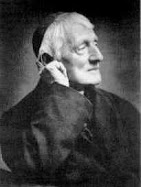 I am back to the U.S. after my brief trip to Spain (arrived Saturday, returned home Wednesday). My husband and I got back late on Wednesday night from Madrid after a rather long trip, due to the usual delays and missed connections. Fortunately, we were bumped up to Business Class on the trans-Atlantic leg, so we were not quite as tired as we might have been.
I am back to the U.S. after my brief trip to Spain (arrived Saturday, returned home Wednesday). My husband and I got back late on Wednesday night from Madrid after a rather long trip, due to the usual delays and missed connections. Fortunately, we were bumped up to Business Class on the trans-Atlantic leg, so we were not quite as tired as we might have been.The focus of this post is the town where we stayed, including some of my photos. More in a later post re. the "Jornada por la Vida" (March for Life) we encountered on our first night there.
As I mentioned in an earlier post, my husband had to go there on business, so I tagged along for my first trip to Spain. The town where we stayed is
The town is also notable as the site of the first meeting between Christopher Columbus and Ferdinand & Isabella, to discuss Columbus' plans for a voyage West to the East Indies. The site of that meeting, the Archbishop's Palace, was also the birthplace of Catherine of Aragon, youngest child of Ferdinand & Isabella and, of course, the first (and true) wife of King Henry VIII. The palace served as the seat of the Archbishops of Toledo from the 13th to the 19th centuries
 , including Cardinal Cisneros, who founded the university there in 1499. An outside tower of the palace is pictured to the right. Unfortunately, the palace itself suffered extensive fire damage in 1939.
, including Cardinal Cisneros, who founded the university there in 1499. An outside tower of the palace is pictured to the right. Unfortunately, the palace itself suffered extensive fire damage in 1939.The town is also famous for its storks, which are protected by law in the town and which seem to have nests in nearly every available tower or rooftop in the town. The photo below is of a stork on the roof of the Convent of St. Bernard (San Bernardo), next door to the
 Archbishop's Palace.
Archbishop's Palace.
Since we arrived on Saturday we decided to attend the Vigil Mass at the Cathedral that evening. The Cathedral, built on the site of the tomb of Sts. Justus and Pastor (Justo & Pastor), two young boys who were martyred for their faith during the reign of the Roman Emperor Diocletian, in the early 4th century. It is known familiarly as the Catedral de lost Santos Niños (the Cathedral of the Holy Children). Below is a photo of the west front entrance, an example of Isabeline Gothic (late 15th cen.). My husband is in front on the left, reading the Mass schedule.

When we left the Cathedral after Mass in search of something to eat, we found something we did not expect--a pro-life march through the main street of town. More about that in my next installment (Spain Trip - Part II). It deserves a separate entry.
Not surprisingly, the town of Alcalá is full of references to Don Quixote, including the statues outside of Cervantes birthplace, pictured above. There is also a statue of Cervantes in the main square of town, the Plaza de Cervantes. (See the photo below left.)

As I mentioned above, the town is home to a university. Founded in 1499 at the beginning of Spain's "Golden Age" by Cardinal Cisneros, among its distinguished list of faculty during the 16th and 17th centuries are St. Ignatius of Loyola, Lope de Vega, Ginés de Sepúlveda and Tomás de Villanueva. Renowned for its traditional humanities curriculum, it is well-regarded in the Spanish-speaking world for its efforts to promote Spanish language and literature. The prestigious Cervantes Prize is awarded each year by the University to honor writers who follow in Cervantes' footsteps.
Our hotel, the Hotel El Bedel (below left), is located next door to the original University building (below right), which now houses the university admissions office.








No comments:
Post a Comment